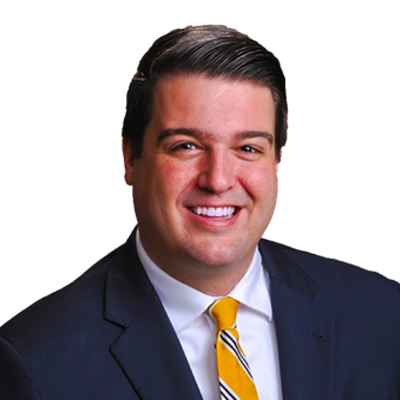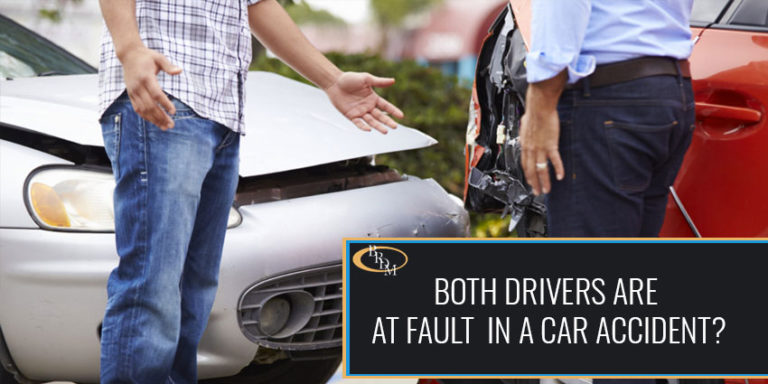Following a car accident, it is vital to determine who was at fault in order to dictate which party is responsible for providing financial compensation for injury and other damages. Some accidents happen as a result of one person’s negligence, while other accidents are the fault of both drivers. In many circumstances, after a car accident, only one person is truly at fault, but their attorney may look for a percentage of fault in the victim driver as a way to reduce their client’s settlement.
Table of Contents
How Does Comparative Negligence work?
In Florida, car owners are required to carry Personal Injury Protection (PIP) coverage, which covers up to $10,000.00 for medical bills and other expenses related to a car accident, regardless of which driver is at fault in an accident. This is commonly referred to as Florida’s “no fault system”.
In most accidents, $10,000.00 is not nearly enough to cover medical expenses related to injuries. This means most victim’s in a car accident have to look to the at-fault driver’s car insurance coverage to potentially pay for their medical bills and treatment. But just because a driver is deemed “at fault” for the accident doesn’t mean they are completely at fault for what occurred. This is where Florida’s “comparative negligence” rules come into play.
Also called the comparative fault rule, this is invoked when it is determined that more than one person is responsible for an accident. In this case, the losses resulting from a car accident are assigned based on each driver’s share of culpability for the accident. If it is determined that a percentage of the accident is your fault, the amount that the insurance company pays out will be reduced by the at fault percentage. As an example, if damages to your vehicle cost $100,000 and it is determined that you were 20 percent at fault in causing the accident, you may recover up to $80,000.
How is Fault Determined?
- Police examination at the scene: The police will likely review physical evidence at the scene of the car accident, including where the accident took place, where and how the vehicle was damaged, and any damage to the road or other property resulting from the accident.
- Traffic violations: The police will also review whether either of the parties involved in the accident were in violation of the law immediately before or at the time that the accident took place; for example, if one of the drivers was speeding at the time of the accident. If you are the victim of a car accident, it is critical that you call the police while still at the scene of the accident in order to help establish fault.
- Statements from witnesses: Any passengers in the vehicle as well as bystanders who saw the accident take place can serve as witnesses. These witnesses may make statements to the police or the insurance company about what they saw. Police may also serve as a witness after collecting evidence at the scene of the accident.
- Video or photographic evidence from the accident scene: Photographs and videos taken at the scene of the accident of the vehicle and any damaged property can help to determine fault. It is important that you do not share photographs or videos of the accident with anyone other than your lawyer.
How Will a Lawyer Help Prove You Were Not At-Fault?
A lawyer can help to obtain evidence in order to prove that you were not at all at fault for the accident by demonstrating that the other driver’s behavior showed the four legal elements of negligence.
Four elements of negligence:
- Duty of care: Every person must exercise the same level of care that another person would in an equivalent situation. When it comes to accidents, each driver on the road must operate their vehicle with the same level of care and safety that another driver would provide if they were driving in the same conditions. Each driver must exercise duty of care by abiding by traffic laws and operating their vehicle in a safe manner to prevent injury to others.
- Breach of duty of care: A lawyer must be able to prove that the other driver violated their duty of care by failing to engage in behaviors that a reasonably sensible person would in the same situation. For example, if a driver is operating their vehicle while texting, runs a red light and crashes into another vehicle, the driver has breached duty of care.
- Causation: A lawyer must be able to establish a clear and direct connection between the other driver’s breach of duty of care and their client’s injuries or vehicular damage. It must also be shown that the other driver could reasonably expect that his or her actions may result in injury or damage to another party.
- The existence of damages: It must be proved that the other driver’s negligence resulted in damages, including medical expenses for injuries, repair bills for the impacted vehicle, approximate costs for long term care in cases of severe injury or financial losses due to an inability to work.
Lawyers can help to prove the four elements of negligence through a number of mechanisms, such as collecting eye witness testimonies and a victim testimony, identifying traffic violations by the other party, and presenting evidence from the scene including damage to the car or damage to other property.
Contact Our Personal Injury Attorneys at Battaglia, Ross, Dicus, & McQuaid
If you have been in a car accident in Florida, please do not wait to contact a lawyer for advice. The first few days after the accident are the most important to building your case. Our experienced personal injury lawyers can help to maximize your compensation following an accident. If you would like to learn more about our experienced personal injury attorneys and how we can help you, you can find more information here or contact us for a free consultation.



